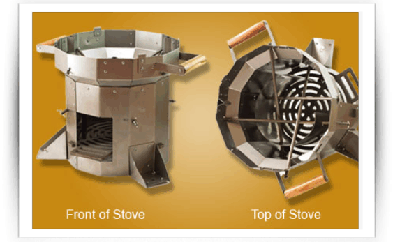| In the past few years, a number of health researchers have come to the same conclusion: that providing a safe, energy-efficient wood-burning cook stove to millions of people in the developing world can directly improve health (by reducing smoke inhalation), aid the environment (by reducing the amount of wood needed for fuel) and alleviate poverty (by reducing the amount of time needed to devote to gather wood every day).
Many projects have pursued this goal, but Potential Energy, a nonprofit dedicated to adapting and scaling technologies to help improve lives in the developing world, is the furthest along, having distributed more than 25,000 of their Berkeley-Darfur Stoves in Darfur and Ethiopia. Their stove's design achieves these aims with features such as a tapered wind collar, a small fire box opening, nonaligned air vents that reduce the amount of wind allowed to stoke or snuff the fire (which wastes fuel) and ridges that ensure the optimal distance between the fire and pot in terms of fuel efficiency. |

*Imagesource: http://gadgillab.berkeley.edu/
The stove requires less than half the fuel of traditional cooking methods, decreasing women's exposure to violence while collecting firewood and their need to trade food rations for fuel.
*Source: https://www.smithsonianmag.com/science-nature/five-innovative-technologies-that-bring-energy-to-the-developing-world-49271677/ |